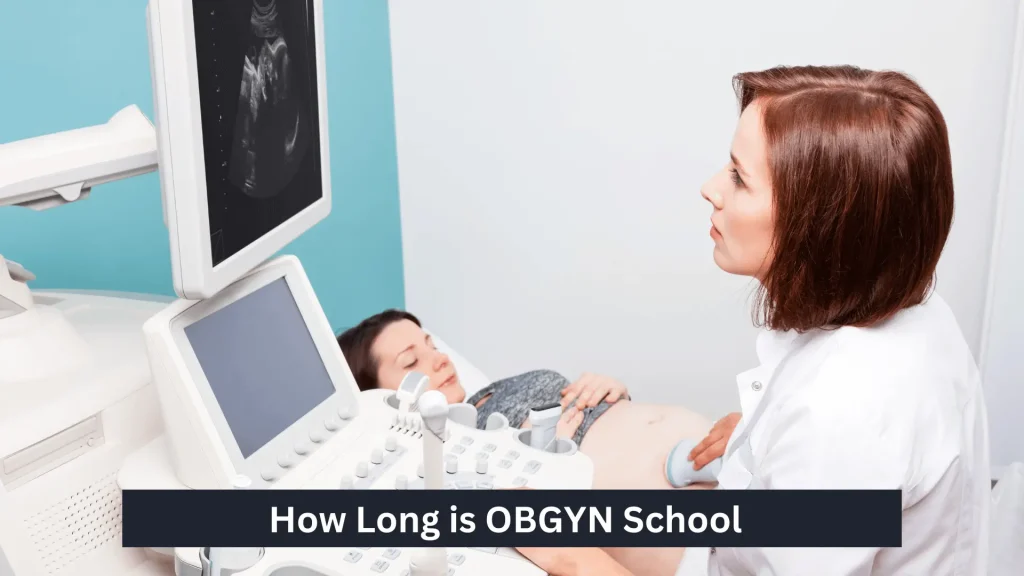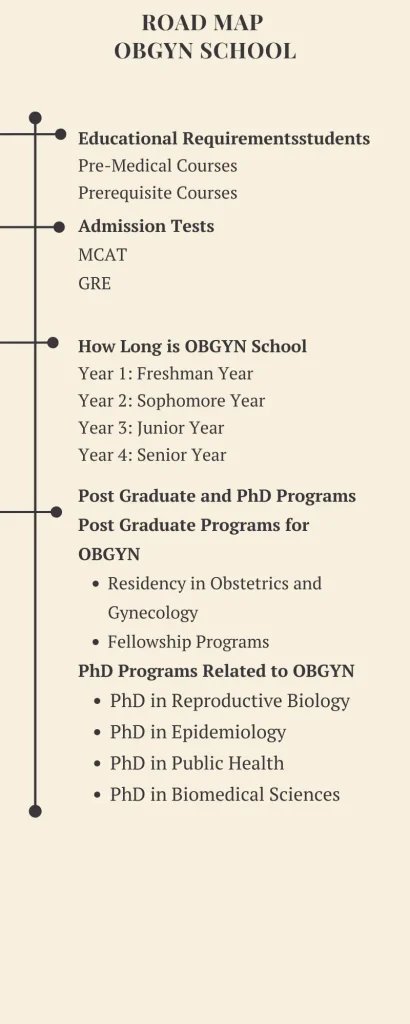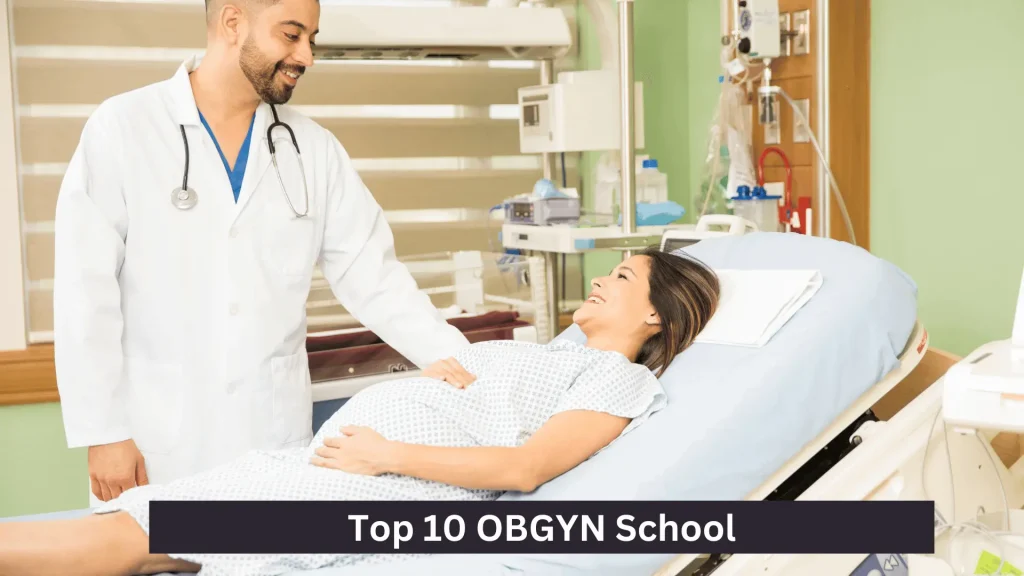The path to becoming an OBGYN involves extensive education and training. Typically, it includes 4 years of undergraduate studies, 4 years of medical school, and a 4-year residency program. This totals around 12 years of education and training. Understanding “How Long is OBGYN School” is crucial for aspiring OBGYNs.
What is OBGYN School
OBGYN school refers to the comprehensive training process required to become an obstetrician-gynecologist. It begins with four years of undergraduate education, followed by four years of medical school where students gain foundational medical knowledge and clinical skills. Afterward, a four-year residency in obstetrics and gynecology provides specialized training in women’s reproductive health, pregnancy, and childbirth.

During residency, aspiring OBGYNs work closely with experienced physicians, gaining hands-on experience in various aspects of obstetrics and gynecology. They learn to perform surgeries, manage pregnancies, and address a wide range of women’s health issues. Completing OBGYN school equips physicians with the expertise needed to provide comprehensive care for women throughout their reproductive lives.
How Long is OBGYN School
Year 1: Freshman Year
Core Focus: Basic Sciences and General Education
Courses and Subjects:
- Biology I & II: Introduction to biological principles, cell structure, genetics, and evolution.
- Chemistry I & II: Basic principles of chemistry, atomic structure, chemical bonding, and reactions.
- General Education Courses: English Composition, Mathematics (Calculus or Statistics), Humanities, and Social Sciences.
- Introduction to Psychology or Sociology: Basic concepts in psychology or sociology, important for understanding patient behavior and social factors in health.
Year 2: Sophomore Year
Core Focus: Advanced Sciences and Beginning of Specialized Preparation
Courses and Subjects:
- Organic Chemistry I & II: Study of carbon compounds, molecular structure, and reactions.
- Physics I & II: Principles of mechanics, electromagnetism, waves, and optics.
- Anatomy and Physiology I & II: Detailed study of human body systems, their functions, and structures.
- Microbiology: Study of microorganisms and their roles in health and disease.
- General Education Courses: Continuation of humanities, social sciences, or arts courses to fulfill degree requirements.
Year 3: Junior Year
Core Focus: Specialized Science Courses and Pre-Med Preparation
Courses and Subjects:
- Biochemistry: Study of chemical processes within and related to living organisms.
- Genetics: Principles of heredity, gene function, and genetic disorders.
- Pathophysiology: Study of functional changes in the body resulting from disease processes.
- Statistics or Epidemiology: Introduction to statistical methods or study of disease distribution and determinants in populations.
- Elective Courses: Options may include advanced biology, health ethics, or public health courses.
Year 4: Senior Year
Core Focus: Advanced Topics and Medical School Preparation
Courses and Subjects:
- Advanced Human Biology or Physiology: In-depth study of human biological systems and their functions.
- Immunology: Study of the immune system, immune responses, and related disorders.
- Pharmacology: Introduction to drug actions, interactions, and therapeutic uses.
- Research or Capstone Project: Independent research project or comprehensive review related to a medical or health topic.
- Medical School Application Preparation: MCAT (Medical College Admission Test) preparation, application workshops, and interviews.

How to Enter OBGYN School
Educational Requirements
Undergraduate Degree: A bachelor’s degree in a related field, typically with a strong emphasis on the sciences, such as biology, chemistry, and physics.
Pre-Medical Courses: Completion of prerequisite courses required by most medical schools, including biology, chemistry (both general and organic), physics, and often biochemistry and mathematics.
GPA: A competitive GPA, usually above 3.5, is often necessary to be a strong candidate for medical school admission.
Entry Tests
Medical College Admission Test (MCAT): A standardized, multiple-choice examination that assesses problem solving, critical thinking, and knowledge of natural, behavioral, and social science concepts and principles. A high score on the MCAT is essential for admission to medical school.
Application Process
AMCAS Application: Submission of the American Medical College Application Service (AMCAS) application, which includes personal information, academic history, work and activities, and letters of recommendation.
Personal Statement: A written essay that discusses the applicant’s motivation for pursuing a career in medicine, experiences that have prepared them for medical school, and future goals.
Secondary Applications: After the initial application, many medical schools require a secondary application with additional questions specific to each institution.
Interviews: Selected applicants are invited for interviews, which can be traditional one-on-one interviews or multiple mini-interviews (MMIs) to assess interpersonal skills and ethical reasoning.
Financial Aids
Scholarships: Various scholarships are available based on merit, need, or specific demographics. These can be offered by medical schools, private organizations, and government programs.
Grants: Need-based grants that do not require repayment, often provided by the federal government, state programs, or educational institutions.
Loans: Federal and private loans are available to cover tuition and living expenses. Federal loans, such as Direct Unsubsidized Loans and PLUS Loans, often offer favorable repayment terms.
Work-Study Programs: Some schools offer work-study programs where students can work part-time to earn money for educational expenses.
Service-Based Programs: Programs like the National Health Service Corps (NHSC) and military scholarships provide financial aid in exchange for service commitments after graduation.
Post Graduate and PhD Programs
Post Graduate Programs for OBGYN
Residency in Obstetrics and Gynecology:
Duration: 4 years
Curriculum: Comprehensive training in obstetrics and gynecology, including labor and delivery, reproductive endocrinology, gynecologic oncology, maternal-fetal medicine, and primary care for women.
Certifications: After completing residency, graduates are eligible to take the board certification exams offered by the American Board of Obstetrics and Gynecology (ABOG).
Fellowship Programs:
Duration: 2-3 years
Specializations:
Maternal-Fetal Medicine: Focuses on high-risk pregnancies and prenatal diagnosis.
Gynecologic Oncology: Specializes in the treatment of cancers of the female reproductive system.
Reproductive Endocrinology and Infertility: Deals with hormonal functioning as it pertains to reproduction and infertility treatment.
Female Pelvic Medicine and Reconstructive Surgery: Focuses on disorders of the pelvic floor and reconstructive surgery.
Curriculum: Includes advanced clinical training, research opportunities, and specialized surgical procedures relevant to the chosen field.
PhD Programs Related to OBGYN
PhD in Reproductive Biology:
Duration: 4-6 years
Curriculum: Focuses on the biological processes related to reproduction, including molecular biology, genetics, endocrinology, and developmental biology.
Research: Involves original research projects leading to a dissertation, often in areas such as reproductive health, fertility, and developmental disorders.
PhD in Epidemiology:
Duration: 4-6 years
Curriculum: Covers the study of disease distribution and determinants in populations, with a focus on reproductive and women’s health.
Research: Includes designing and conducting studies on public health issues, maternal and child health, and the impact of diseases on reproductive health.
PhD in Public Health:
Duration: 4-6 years
Curriculum: Emphasizes population health, health policy, and preventive medicine, with specializations in maternal and child health or women’s health.
Research: Focuses on developing and evaluating public health interventions to improve reproductive health outcomes and reduce health disparities.
PhD in Biomedical Sciences:
Duration: 4-6 years
Curriculum: Involves advanced training in biomedical research techniques and applications, often with opportunities to specialize in areas such as reproductive health or women’s health.
Research: Engages in cutting-edge research projects, often leading to new discoveries in reproductive biology and treatments for gynecologic conditions.
Top 10 OBGYN Schools

Johns Hopkins University
Location: Baltimore, Maryland
Highlights: Renowned for its extensive research facilities, innovative teaching methods, and comprehensive clinical training programs.
Harvard University
Location: Cambridge, Massachusetts
Highlights: Offers cutting-edge research opportunities and is affiliated with some of the top hospitals in the world, providing exceptional clinical training.
University of California, San Francisco (UCSF)
Location: San Francisco, California
Highlights: Known for its strong focus on patient care, research in women’s health, and a collaborative learning environment.
Stanford University
Location: Stanford, California
Highlights: Combines rigorous academic programs with innovative research and comprehensive clinical training in top-tier medical facilities.
Mayo Clinic Alix School of Medicine
Location: Rochester, Minnesota
Highlights: Offers unparalleled clinical experiences and access to Mayo Clinic’s extensive healthcare system, renowned for its research and patient care.
University of Pennsylvania (Perelman)
Location: Philadelphia, Pennsylvania
Highlights: Strong emphasis on research and interdisciplinary collaboration, with excellent clinical training at top-rated hospitals.
Columbia University
Location: New York, New York
Highlights: Offers a comprehensive curriculum with access to extensive research opportunities and diverse clinical experiences in urban healthcare settings.
University of Michigan – Ann Arbor
Location: Ann Arbor, Michigan
Highlights: Known for its strong research programs, innovative teaching methods, and a wide range of clinical training opportunities.
Washington University in St. Louis
Location: St. Louis, Missouri
Highlights: Offers a balanced approach to research and clinical training, with a focus on evidence-based practice and patient-centered care.
Duke University
Location: Durham, North Carolina
Highlights: Provides a rigorous academic environment, extensive research opportunities, and comprehensive clinical training in various aspects of obstetrics and gynecology.
These schools are renowned for their academic excellence, innovative research, and comprehensive clinical training programs, making them top choices for aspiring OBGYNs.
Factors Affecting the Length of OBGYN School
1. Educational Background:
Undergraduate Degree: The choice of major and completion of required pre-medical courses can impact the duration of the undergraduate program. Some students may need additional time to fulfill all prerequisites.
Gap Years: Some students take gap years between undergraduate studies and medical school to gain work experience, conduct research, or strengthen their medical school applications.
2. Medical School Curriculum:
Traditional vs. Accelerated Programs: Traditional medical school programs typically last four years, but some schools offer accelerated three-year programs for certain specialties.
Dual Degree Programs: Pursuing dual degrees such as an MD/PhD or MD/MPH can extend the time spent in medical school by several years.
3. Residency Training:
Residency Duration: The standard OBGYN residency program lasts four years. However, the length may vary slightly depending on the institution and specific training requirements.
Research Year: Some residency programs offer or require a dedicated research year, extending the overall training period.
4. Fellowship Training:
Specialization: Pursuing additional fellowship training in sub-specialties like maternal-fetal medicine, gynecologic oncology, reproductive endocrinology, or female pelvic medicine can add 2-3 years to the training timeline.
Final Verdict
The journey to becoming an OBGYN involves extensive education and training, influenced by various factors. Understanding these can help aspiring OBGYNs effectively plan their career paths and navigate the complexities of their training.
FAQs
1.How long does it take to become an OBGYN?
It typically takes around 12 years, including 4 years of undergraduate studies, 4 years of medical school, and 4 years of residency.
2.What are the educational requirements for OBGYN school?
A bachelor’s degree, completion of pre-medical courses, a competitive GPA, and a high MCAT score are essential for medical school admission.
3.What does OBGYN residency training involve?
Residency involves comprehensive clinical training in obstetrics and gynecology, including labor and delivery, reproductive health, and gynecologic surgery.
4.Are there fellowship opportunities after OBGYN residency?
Yes, additional fellowship training in sub-specialties like maternal-fetal medicine, gynecologic oncology, and reproductive endocrinology can further extend training by 2-3 years.
5.What financial aid options are available for OBGYN training?
Scholarships, grants, loans, work-study programs, and service-based programs are available to help finance medical education and training.
